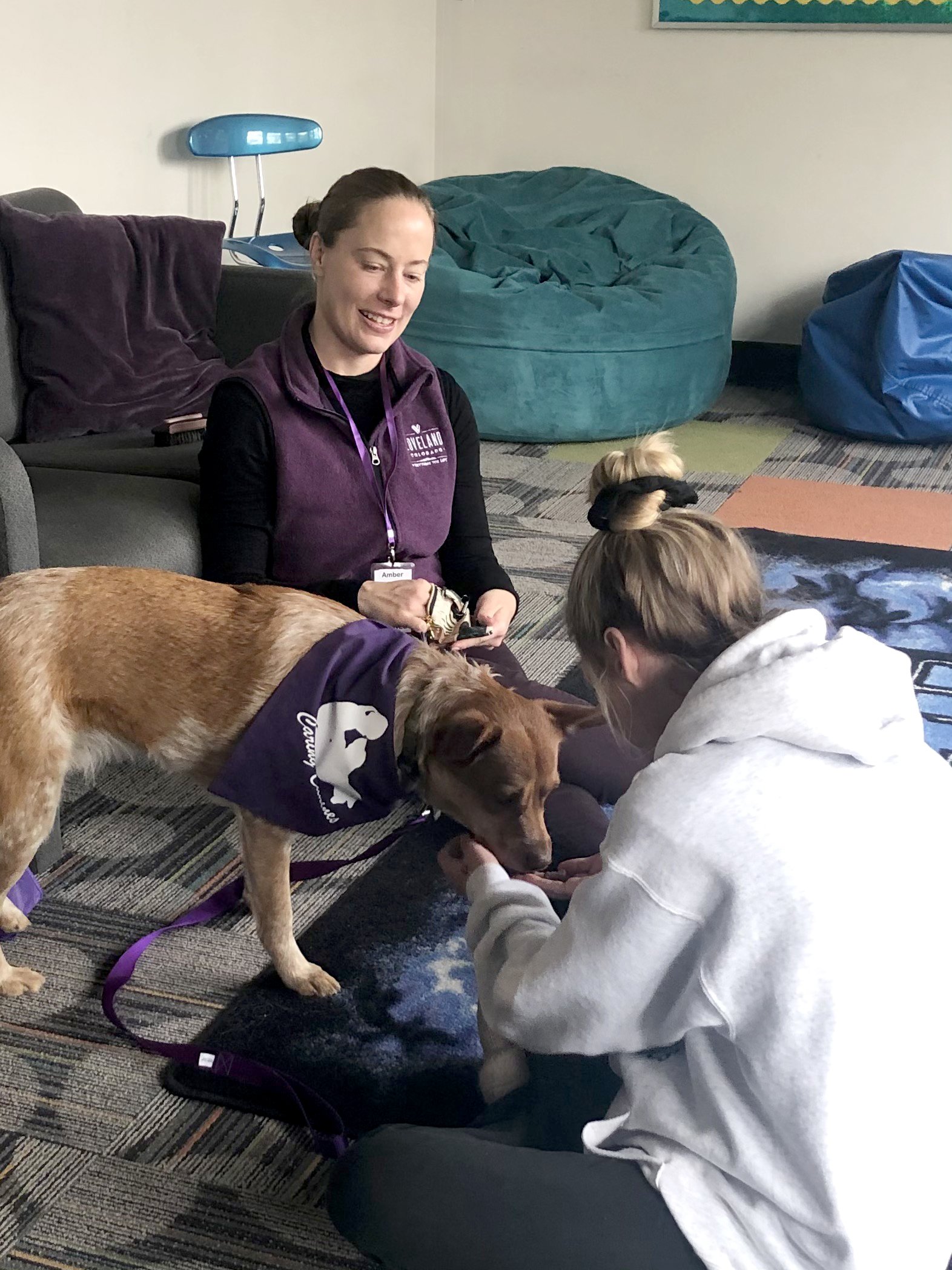Canine Connections: Bridging The Gap Between Communication
Photo courtesy of Carine Canine’s Foundation
Most people love dogs, but is it really just the “love” of dogs that makes us feel so connected to them? Or, is it the fact that they fulfill a need that we have difficulty obtaining in our current environment?
Colorado State University’s ongoing study of the human/animal bond has stated numerous times that petting and making eye contact with a dog can lead to increases in oxytocin—a chemical in the brain involved in empathy trust and bonding. They continue to state that interactions with dogs can also decrease cortisol, the brain’s primary stress hormone, to improve our overall mood and well-being, while reducing anxiety.
In 2018, News In Health released an article about the power of pets and the health benefits of human/animal interaction. The article discusses the foundations of mindfulness and how they include attention, intention, compassion and awareness. When analyzing the way animals act, we can see that those are all things they innately bring to the table.
When describing the effects dog therapy has on her clients, Sylvia Stribling, director of Caring Canines Colorado, states, “They become more self-confident, less depressed, improve communication skills, learn to express emotions and become less anxious.” Whether the client is a student who needs extra attention to reach their goals or is a resident in an elderly care facility experiencing joy from a four-legged friend, research and experiences show that dogs provide a tangible form of connection and allow for deeper communication.
Records of canine therapy in hospitals and for therapeutic intervention date back to the early 1900s, showing us that the connection between healing and our furry companions has been used clinically for over 100 years. It’s no secret that humans and dogs have formed strong relationships throughout history; although, today’s four-legged companions are less likely to be used for means of protection of the homestead as they once were, and more to benefit one’s mental and physical health.
At HopeWest, Western Colorado’s hospice and long-term care facility, this rings true. In 2019, HopeWest’s then 27 volunteer dog and handler pairs provided 375 hours of volunteer service, fulfilling 98 referrals for pet therapy across Mesa, Delta, Montrose, Ouray and Rio Blanco counties. Lisa Orter, senior director of volunteer services at HopeWest, explained how dog volunteers help complete their holistic care model.
At HopeWest, some residents, due to their age or their condition, have limited verbal communication, decreasing their ability to be socially connected with those around them, which can be quite isolating. HopeWest’s goal is to not only meet the healthcare needs of residents, but also to fulfill their emotional and spiritual needs.
Orter spoke fondly about a specific dog/resident pair that would simply enjoy a weekly ice cream together. Arnold the Chihuahua allowed a non-verbal resident to create a bond over something they both loved; the resident may not have been able to have that connection if it wasn’t for Arnold’s visits.
Michele Bishop, the mental health specialist of the Poudre School District, explained that dogs often bridge the gap in communication between young students, their teachers and peers. Bishop has worked directly with the Caring Canines volunteer dog/handler duo Oscar and Katie for the last six to seven years. Over this time, they have helped students who are experiencing behavioral issues, those who have dealt with some kind of trauma in their lives and teachers and students navigating the tough emotions around grief.
Each student has different goals, and the dog/handler duos work through a variety of skills with the students to not only reach those goals but teach them how that transitions into the way they interact with others. A student who is having a hard time opening up may work on how to say commands in a kind but firm way. This not only engages the student and the dog, but provides the student the knowledge and ability to convey their needs while focusing on the tones of their voice. This is such a powerful way to teach children that their voice is a tool to access the rest of the world.
Photo courtesy of Carine Canine’s Foundation
Another therapy dog who touched the hearts of many students and staff is Annabelle. Annabelle is an energetic dog with a lot of spunk. Due to her temperament, she gave students who were having a hard time regulating their own energy an understanding of how to manage their emotions. By observing the tools that were used to calm Annabelle down, they were able to formulate their own tools to do the same for themselves. Bringing canines into schools gives faculty a way to better understand their students and helps them thrive not only in an education setting, but also on their journey through life.
The connection between canine and human is nothing short of remarkable. Whether it is the humanistic connection or the innate mindfulness that dogs possess, it’s consistently clear that dog therapy is something that needs to continue.
If you would like to volunteer at HopeWest (hopewestco.org) or donate to the Caring Canines (caringcaninescolorado.org) non-profit, check out their websites for more information.
Originally published in the Winter 2021-22 issue of Spoke+Blossom.


